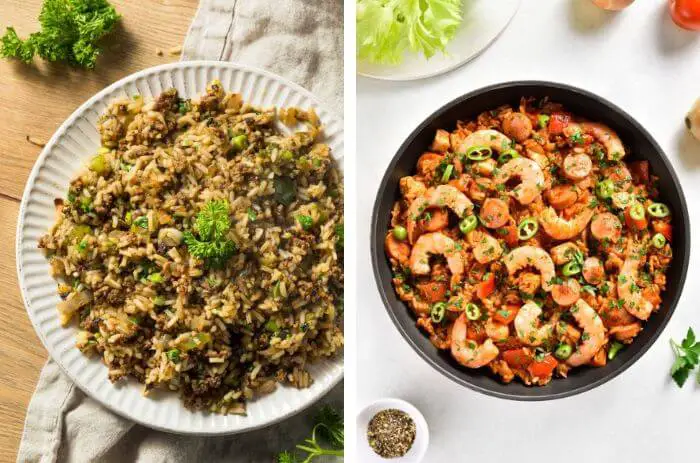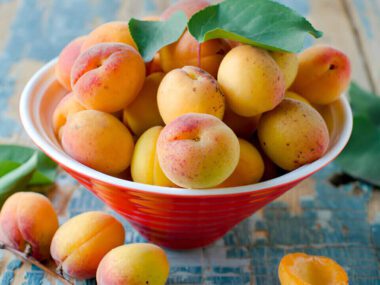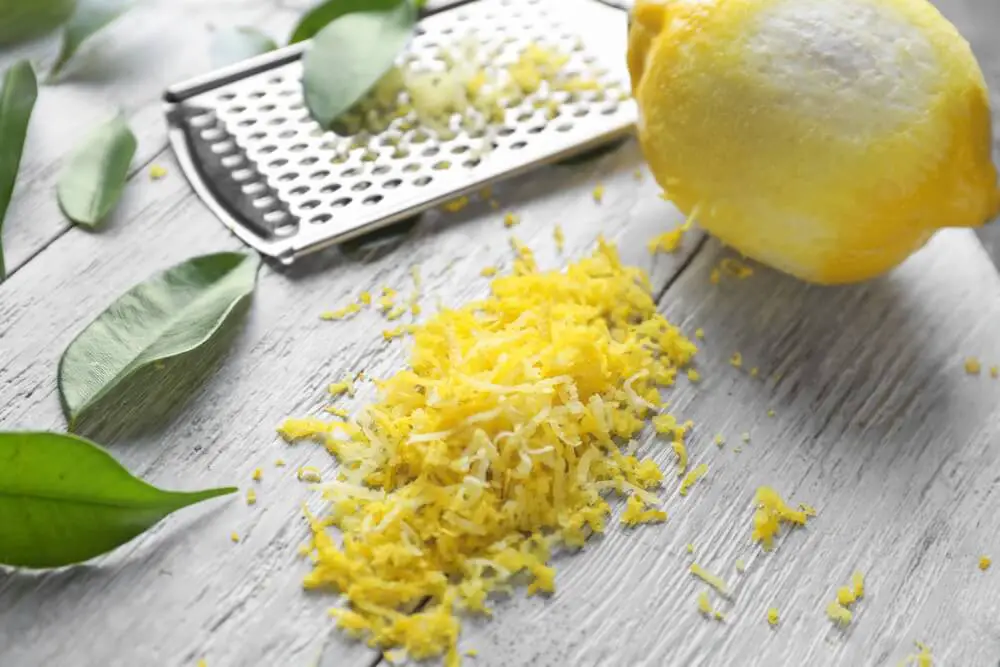Y’all hungry for a taste of the Louisiana bayou? Well, hold onto your taste buds because we’re diving headfirst into the mouthwatering world of Creole and Cajun cuisine. You’ve probably heard of these two southern classics – Jambalaya and Dirty Rice – but do you know the real deal? Stick around as we uncover the sizzling secrets behind the Difference Between Jambalaya And Dirty Rice.
Difference Between Jambalaya And Dirty Rice
The Cajun-Creole Connection
Before we jump into the pots and pans, let’s set the stage. We’re in Louisiana, baby! This state is like a melting pot of culinary influences: French, Spanish, African, and Caribbean vibes flow through its veins.
Jambalaya and Dirty Rice are the star players in this spicy saga, but they come from different corners of the Bayou.
Jambalaya is like the lovechild of Spanish paella and French jambon. It got its name from “jambón,” which is Spanish for ham. But as it simmered in the Louisiana pot, it made its own identity with flavors that are a wild dance of smoky, spicy, and savory.
Dirty Rice, on the other hand, is pure Cajun soul food. It was born out of necessity – a way to stretch meat and make a hearty, flavorful dish using what was readily available in rural Louisiana.
Now that we’ve got the backstory simmering, let’s dive into the delicious details.
The Ingredients
The first thing that sets Jambalaya and Dirty Rice apart is the meat. Oh, the glorious meat!
Jambalaya is a carnivore’s dream. It throws a meaty parade with sausage, andouille (a smoked sausage), pork, chicken, and sometimes seafood like shrimp or crawfish. These meats are chopped into bite-sized pieces and thrown into the mix with rice, veggies, and spices. The result? A rich, hearty dish that’s like a flavor explosion in your mouth.
Dirty Rice, on the other hand, is grounded (pun intended). It’s all about ground pork and chicken giblets. You know, the good stuff like liver and gizzard. These meats are sautéed to perfection with onions, celery, and bell peppers. Then, they cozy up with rice and spices, giving the dish a unique texture and flavor. It’s like a meaty symphony playing in your taste buds.
Now, let’s talk veggies and spices.
Jambalaya brings in the “holy trinity” of Creole cuisine: onions, bell peppers, and celery. But it doesn’t stop there; it throws in carrots and tomatoes for good measure. Spices like thyme, paprika, cayenne pepper, and bay leaves join the party, making sure every bite is a burst of flavor.
Dirty Rice sticks to the Cajun “holy trinity”: onions, bell peppers, and celery, with a sidekick of garlic and green onions. The spice cabinet opens up with thyme, sage, and black pepper, giving it a rustic and robust flavor.
Cooking Method
How you cook these dishes is another twist in the tale.
Jambalaya starts with a meaty sear. The meats and veggies get cozy in the pot, developing their flavors and creating a caramelized base. Then, rice, liquid (like broth or tomato sauce), and spices hop in. It simmers until the rice is tender, and the flavors do the tango together. Slow and steady wins the race here, folks!
Dirty Rice is a bit more impatient. Ground meat and giblets hit the pan with veggies and spices. Rice joins the party, cooking up quickly and absorbing all those flavorful juices. It’s a slightly drier dish, with a more pronounced meaty punch.
Flavorful Identities
So, what’s the flavor profile like?
Jambalaya is the complex, mysterious type. It’s smoky, spicy, and savory, all at once. Sausage and andouille add a hint of smokiness and spice, while the veggies and spices layer on the depth. It’s like a slightly tangy, smoky symphony with a spicy kick.
Dirty Rice is the hearty, down-to-earth friend. Ground pork and chicken giblets bring their A-game, making every bite meaty and savory. The Cajun “holy trinity” adds a pungent, aromatic touch. It’s like a warm, earthy hug from your grandma’s kitchen.
How They Dress for the Party
The way these dishes dress up for the plate is another telltale sign of their personalities.
Jambalaya is the one-pot wonder. Everything – the rice, meats, veggies – mingles together, creating a colorful masterpiece. It’s often garnished with green onions or parsley, adding a fresh burst of color to the ensemble.
Dirty Rice, on the other hand, is a sidekick. It usually plays the supporting role, with the ground meat and giblets resting on top of the rice. It has that “dirty” look, thanks to its appearance, but it’s delicious through and through. Green onions make a cameo, adding a pop of color.
Regional Twists and Turns
In the Bayou, these dishes have their own local accents.
Jambalaya has a Creole cousin, famous in New Orleans, known as “red jambalaya” because of its tomato-y twist. Meanwhile, its Cajun cousin skips the tomatoes and goes for a drier texture. Urban vs. rural, all in one pot.
Dirty Rice is no stranger to variations. Different meats like beef or seafood might make an appearance. Veggies like bell peppers might join the party. The spice blend might have a wilder side, depending on where you’re at.
Outside of Louisiana, you’ll find international cousins. The Caribbean has its own “jambalaya” with goat or seafood and local spices. West Africa has “jollof rice,” a distant cousin with its own groove.
Where They Belong
Jambalaya is the city slicker, closely tied to New Orleans and Creole cuisine. It’s the star of Mardi Gras parties, crawfish boils, and family gatherings. Tailgate parties, picnics, and festivals also welcome it with open arms.
Dirty Rice is the rural hero, beloved in Cajun households. It’s a comfort food at family meals, potlucks, barbecues, and casual gatherings. It even makes an appearance at holiday feasts, from Thanksgiving to Christmas, and special occasions like weddings and reunions.
Wrapping it Up
So, there you have it, the savory showdown of Jambalaya vs. Dirty Rice. Two dishes from the heart of Louisiana, each with its own flair, flavor, and story.
Whether you’re in the mood for a complex, smoky dance with Jambalaya or a hearty, meaty hug from Dirty Rice, one thing’s for sure – you’re in for a taste of the Louisiana bayou like no other.
So, next time you find yourself at a Cajun feast or Creole celebration,
you’ll know exactly what’s on the menu, and you can savor every bite of these southern delights. Y’all, it’s time to get cookin’!



